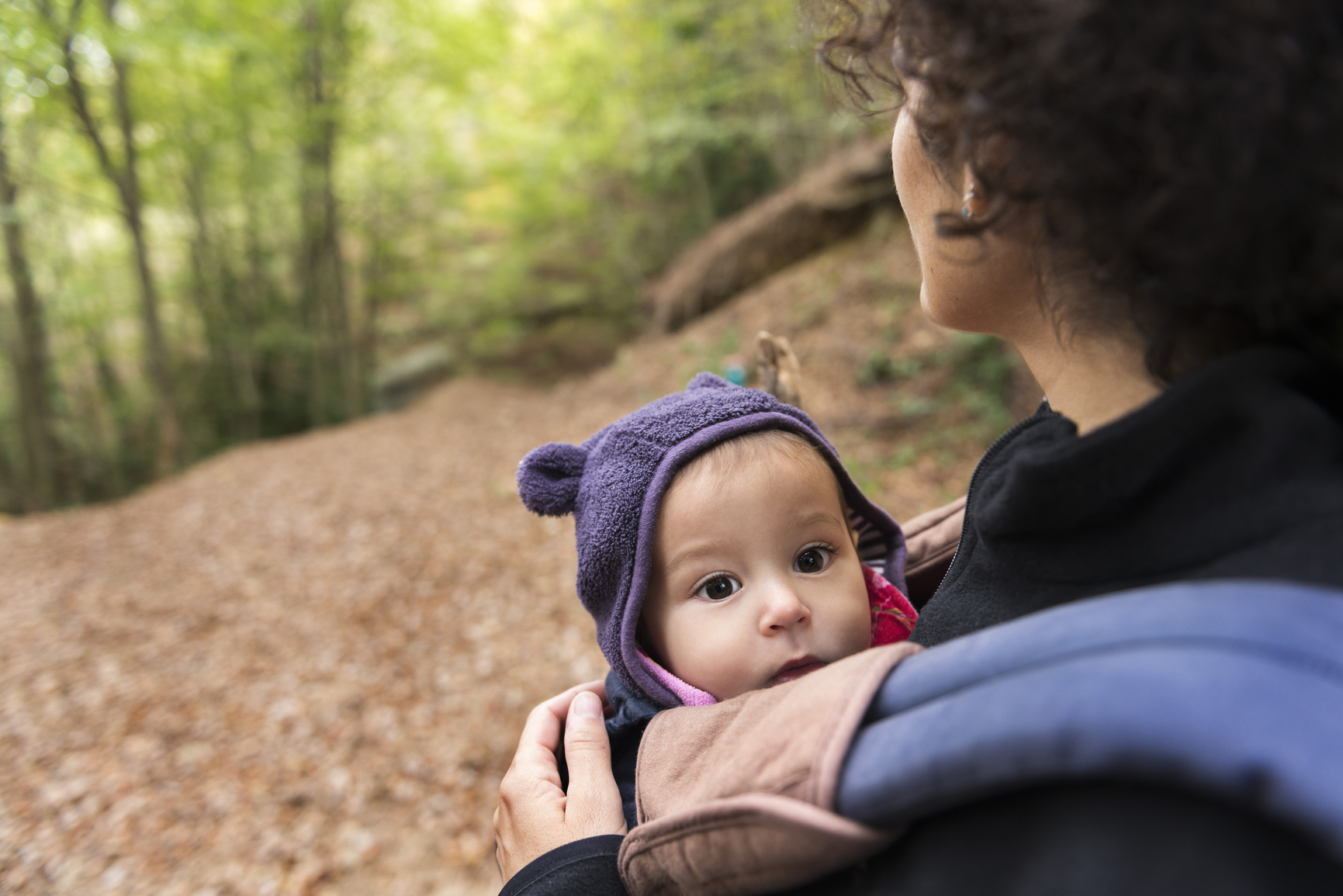
Many parents choose to carry their baby is a safety approved sling when they are out and about and even around the house.
The good news about baby slings is that you cannot spoil your baby by carrying them. Babies have been carried around by their parents for thousands of years, long before strollers and jungle gyms were ever invented. Babies love to be able to smell your skin, hear your heartbeat and voice and feel the gentle rhythm as you walk around carrying them. In addition, babywearing or carrying your baby around in a safe, soft sling is something that can help both dads and mums to bond with their baby.
Find out what local support is available to help you find the best sling for you and your baby and for additional information on keeping baby safe while in a sling. Here is some information from the NCT on baby slings:
NCT information on baby slings
Babywearing helps to promote bonding. When you are at home you may be able to have your baby in skin to skin contact too. This and babywearing, in general, will allow you both to enjoy the release of a hormone called oxytocin. This is a hormone produced to help you bond with your baby and it increases trust and induces calmness in you.
When you use a baby sling, it’s important to follow some safety guidelines as sadly some babies have died in unsafe slings or slings being used incorrectly. Always follow the T.I.C.K.S. guidelines.
Baby should be:
In many areas, you can visit a sling library or find a baby wearing consultant who can help you choose and fit the right sling for you.
Babywearing and bonding
Bonding is a process, it’s not kind of a one-off event and bonding really begins during pregnancy. Baby slings can help to promote bonding as the skin to skin contact you both enjoy will release a hormone called oxytocin at various points and this is a hormone specifically kind of evolved to help you bond with your baby and it increases trust and it induces calmness in you.
Some parents feel an instant attachment and deep protective love the first time they hold their babies whilst others take time. The good news is that prolonged skin to skin contact is now more common practice meaning that parent and baby can smell and familiarise themselves with each other. This promotes bonding.